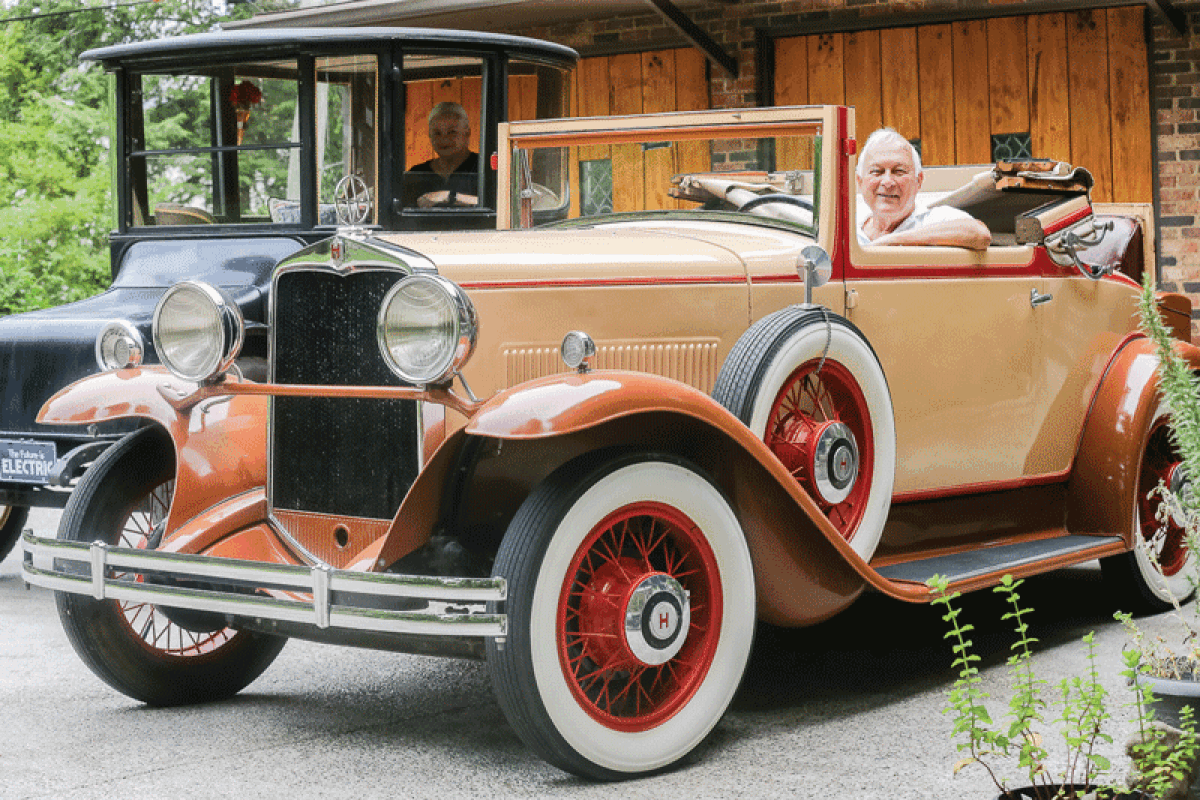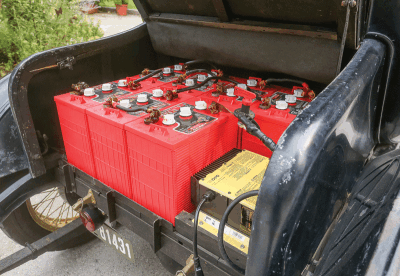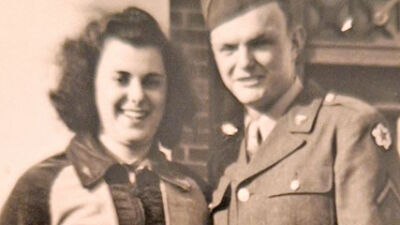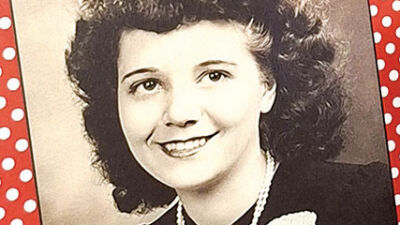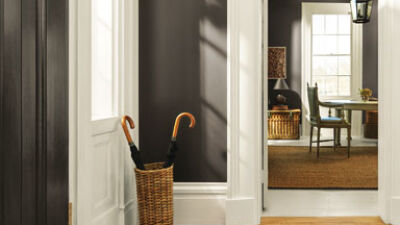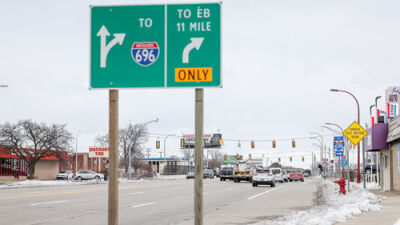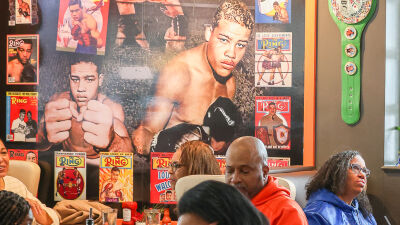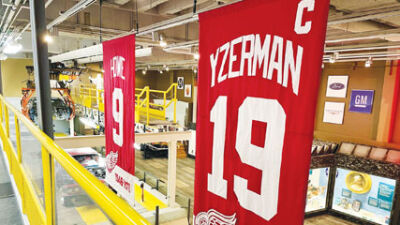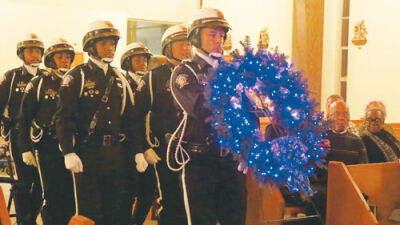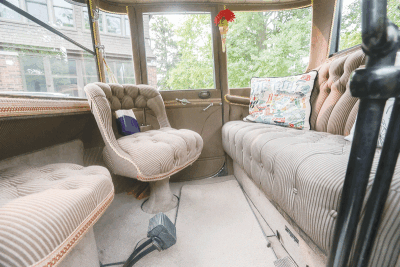
The 1918 Detroit Electric is designed like a carriage and has a parlor feel.
Photo by Patricia O’Blenes
METRO DETROIT — Many years ago, when their kids were younger, Bill and Robin Heller were out with the family at Greenfield Village, in Dearborn, for the Old Car Festival.
The annual event gives antique car owners — from across the country — the opportunity to display their vehicles and drive around the property.
“We were walking past this one area,” Bill said. “There was an elderly couple, sitting in their lawn chairs, underneath this big, beautiful oak tree. They both had books in their hands and they were sound asleep. It looked so peaceful.”
That image was one of the reasons Bill and Robin became interested in antique cars. The Grosse Pointe Farms couple owns two vintage vehicles: a 1930 Hupmobile Cabriolet, which is the one that Bill drives, and Robin’s 1918 Detroit Electric built by the Anderson Electric Car Co.
Bill’s desire to drive a Hupmobile also stems from his upbringing.
“My dad, being a journeyman and tool and die maker, fixed everything around our house. He had a workshop down in the basement,” Bill said. “Being the eldest son, it was my responsibility to stand there and watch him. There was a picture of him in his Hupmobile when he was a young man. It was the first car he was able to buy.”
When it came time for his parents to move out of Bill’s childhood home and into a condominium, his dad was going to toss out the photo of him in the Hupmobile, but Bill stopped him.
“I want this picture,” he told his dad. “I stared at it all those years while all my friends were out playing. So when we got interested in cars, Robin enrolled me in the Hupmobile Club.”
Bill’s Hupmobile is the same model his dad owned but with some different features. Bill found the car after his father died.
“It’s the only convertible I’ve ever had. It’s reminiscent for me of my dad,” Bill said. “When the top is down, you get the wind in your hair. It’s unique. It’s different. It’s fun.”
The Hellers are members of the Antique Electric Club, which is part of the Antique Automobile Club of America based in Hershey, Pennsylvania.
Both the Hupmobile and the Detroit Electric have been displayed at various events, including the Old Car Festival in Greenfield Village, the Concours d’Elegance in Grosse Pointe Farms, and the EyesOn Design at the Edsel and Eleanor Ford House in Grosse Pointe Shores.
During the weekend of July 28-30, Bill and Robin displayed the 1918 Detroit Electric in the “EVs: Then and Now” exhibit at the Ford Piquette Avenue Plant Museum, located at 461 Piquette Ave. in Detroit.
This year’s Old Car Festival at Greenfield Village is set for Sept. 9-10. For more information, visit thehenryford.org.
‘It can feel like a living room’
Robin and Bill both have researched the history of the Detroit Electric.
“As modes of transportation were shifting away from the horse, they opted more towards electric,” Robin said.
Vehicles at the time also were powered by steam or gasoline.
“The Detroit Electric was very popular,” Robin said. “It’s a unique kind of thing to drive. It’s very easy to stop and start. There is no cranking. The design of it is almost like a carriage. It’s almost a Cinderella kind of feeling because you’re up high.”
The window area of the 1918 model is known as the “greenhouse.”
“The doors go up to a certain level, and then you’ve got windows that go above it. So you got your side windows and your windshield. That’s called the ‘greenhouse,’” Robin said. “The visibility is great. You can see all around.”
The vehicle’s interior is referred to as “parlor seating.”
“The driver actually drives from the back seat. You’ve got a friend sitting next to you. In front, I’ve got one chair that swings around so that it can face you on the passenger side,” Robin said. “Directly in front of me is a small jump seat. You can have four people comfortably sitting in there, all facing each other talking. That’s the parlor aspect of it. It can feel like a living room.”
Because it’s electric, there is no gas pedal. Instead of a steering wheel, tillers are used to maneuver the car. A tiller provides leverage in the form of torque to turn the device that changes the direction of the vehicle.
“There’s a tiller for steering where I push to the left to go left or I would pull towards me to go right,” Robin said. “There’s a second one that is shorter that is used for the throttle. Those are my five speeds.”
With her sailing background, Robin was a natural at using the tillers. The 1918 Detroit Electric can drive as fast as 22 mph. There are no blinkers, so Robin uses hand signals when turning left or right. The Hellers make sure to charge the car on a regular basis.
“Nowadays, we carry our own charger with us,” Bill said. “It’s built into the car. If you deplete the battery, it takes about eight hours to charge.”
Robin likes to ride around the Grosse Pointes and in rural areas with the Detroit Electric. It often draws attention from other drivers, as was the case when she recently took it for a drive over to a friend’s house. While stopped at a red light, the driver next to her wanted to know what kind of car she was driving.
“A Detroit Electric,” she told him a couple of times before the light turned green.
 Publication select ▼
Publication select ▼